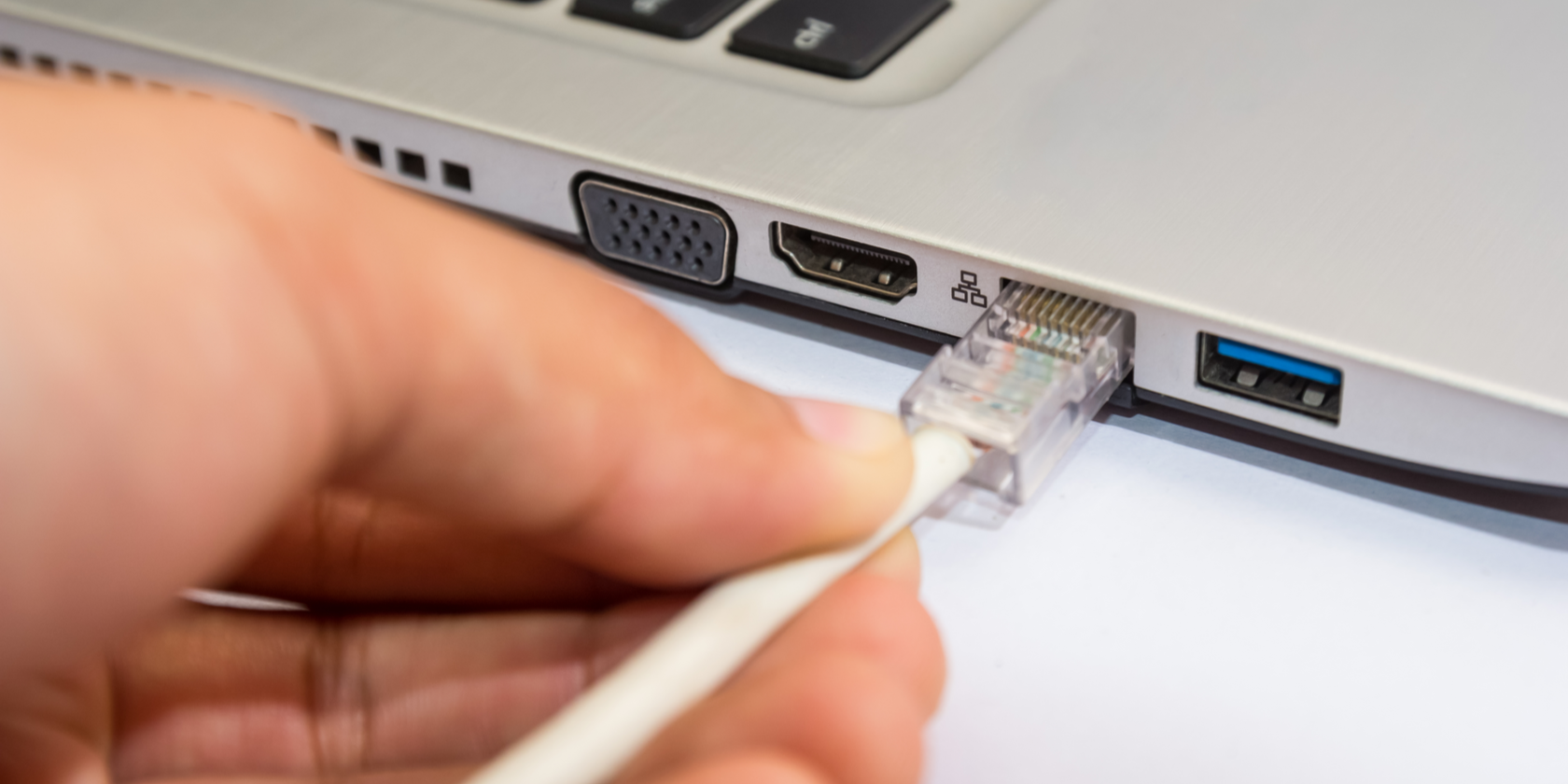While Wi-Fi is the most common method for getting devices online today, it’s not the only way to do so. It’s also possible to connect with a wire, known as an Ethernet cable.
Let’s look at what an Ethernet cable is, why it makes your connection faster, and how you can start using one.
What Is an Ethernet Cable?
An Ethernet cable, also called a network cable, is simply a cable that connects your desktop, laptop, game console, or other device to your network’s router. This is called “hard-wiring” your device to the network, and was common before Wi-Fi became the standard and allowed wireless connections.
A lot of devices have an Ethernet port on them, which allows them to connect using this standard cable type. When you buy a device like a router, an Ethernet cable is often included. You can also purchase Ethernet cables online, in various lengths, at retailers like Amazon and Newegg.
An Ethernet cable has the same connector at both ends: it looks like an old landline phone cable, but is larger.
What Are the Advantages of Ethernet Cables?
Using an Ethernet cable to connect your devices to the internet is more reliable than connecting via Wi-Fi. You’ll experience less network stuttering and don’t have to worry about interference from other devices, walls, etc.
Ethernet connections are also faster than using Wi-Fi. With an Ethernet cable, information travels across a dedicated and consistent line. It’s more efficient than Wi-Fi, which sends out wireless signals in all directions. Information can travel more quickly across cables than it does through the air.
If you have an Ethernet cable, you can test this for yourself. Run a network connection test at Speedtest.net on Wi-Fi, then try it again while connected with an Ethernet cable. Your speed with the cable will likely be closer to the speed your ISP advertises.
It’s important to note that no matter what connection type you use, you can’t exceed the speed you’re getting from your ISP. Ethernet cables can often provide speeds up to 1Gbps, but if you’re only paying for 100Mbps, you won’t exceed that without upgrading your plan.
How to Start Using Ethernet Cables
A lot of devices, such as desktop PCs, PlayStation and Xbox consoles, and smart TVs have Ethernet ports built-in. To connect these devices to your network, all you have to do is plug an Ethernet cable into the port on the device, then connect the other end to your router. The cable will click into both ends, securing it.
Some devices will immediately connect once you do this; in other cases, you may have to go into the network options and tell it to use Ethernet instead of a Wi-Fi connection.
Other devices, such as the Nintendo Switch and modern MacBooks, don’t have an Ethernet port. In these cases, you can purchase a USB to Ethernet adapter. This plugs into your device using a USB-A (Switch) or USB-C (MacBook) port, then allows you to connect an Ethernet cable as you would normally. It’s an extra cost and the dongle is a bit of a hassle, but it’s worth it for the increased speed.
If you want to start using Ethernet cables, you might run into the common roadblock of physical limitations. In cases where your router is far away from the device you want to connect, it might not be possible to run a cable the whole way across your house, drill through the floor, etc.
If this is an issue for you, consider using powerline adapters. These are devices that plug into power outlets next to the device you want to connect and your router. By plugging an Ethernet cable into each end, the network signal travels across the existing power lines in your house. It’s not quite as reliable as a true Ethernet connection, but can come in handy if you have no other options.
Finally, most routers have four Ethernet ports for connecting devices. If you want to connect more, you can purchase a network switch. Basic switches simply plug into an Ethernet port on your router and provide additional Ethernet slots.
Use Ethernet Cables for Better Connections
Now you know what an Ethernet cable is for and how to take advantage of them. Essentially, they provide a faster and more reliable way to connect your devices to your network than Wi-Fi does.
They’re not suitable in all cases—smartphones are an obvious exception. But for any device that you use often and want the best network performance on—like your work desktop or a game console where you play online—they’re a great benefit.
Image Credit: krichie/Shutterstock
About The Author

